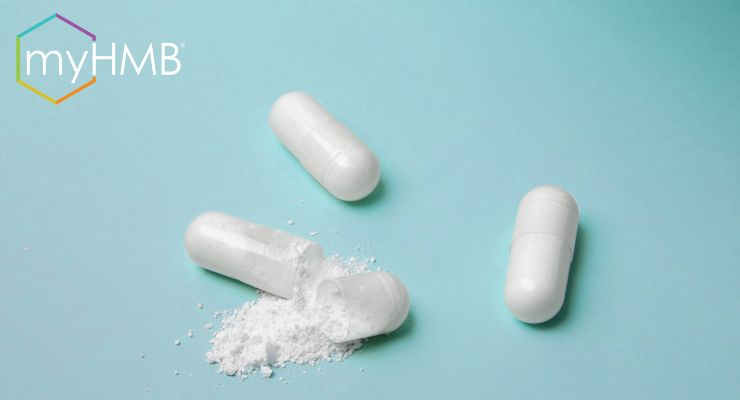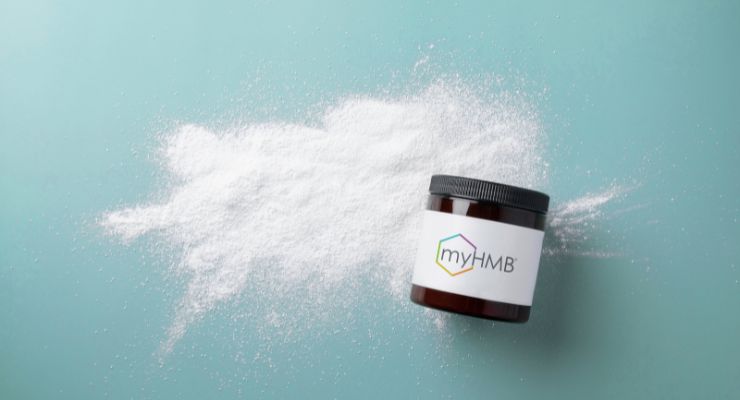Videos
How to Maintain Healthy Muscle While on a Fat-Loss Regimen with HMB
How to Maintain Healthy Muscle While on a Fat-Loss Regimen with HMB
VP of Business Development Shawn Baier explains how TSI Groups’ myHMB can help and who can benefit.
Released by TSI Group LTD
04.15.24
Nutraceuticals World (NW): Weight loss has really been in the spotlight since Ozempic and other new medications have come into the picture. Can you speak to the need to maintain muscle while on a weight loss regimen? What are the risks associated with muscle loss?
Shawn Baier, MS, MBA, TSI Group: Many people look at weight loss as the goal. In reality, the goal is fat loss. GLP-1 RAs provide great appetite control. But by reducing the body’s signal for consumption, they also make it challenging to meet the body’s needs for macronutrients and micronutrients. What ends up happening is you go into intermittent, long-phase fasting as well as starvation periods. And any time you are in starvation mode, you break down just as much muscle as fat, in about a 50/50 ratio.
That’s a concern because we need muscle to maintain long-term fat loss. If you are losing muscle then go off the drug, chances are you’ll regain the weight. But that rebound will not be at the same 50/50 split of muscle and fat. For the most part, it all comes back as fat mass. That sets the stage for more difficult fat loss in the future.
The best way to mitigate this is to make sure your micronutrient and macronutrient needs are met, especially protein, and to supplement with HMB.

Photos courtesy of TSI Group
NW: What is HMB and how might it help in this context of promoting fat loss in combination with muscle maintenance?
Baier: HMB stands for β-hydroxy β-methylbutyrate, a downstream metabolite of the amino acid leucine which is a building block of protein. HMB works by two unique mechanisms. One is an increase in protein synthesis. More importantly, it also reduces protein breakdown.
TSI’s myHMB has been shown to maintain muscle mass during times of metabolism or high stress. For example, we have data supporting its efficacy in bed-rest patients. We also have data from clinical studies assessing its efficacy during periods of long-term fasting and intermittent fasting.
Studies show it is also beneficial for athletes who are trying to cut weight to fit into certain weight classes for competitive events such as judo, boxing, or wrestling. A lot of people enter into a starvation period when they cut weight. What’s interesting with HMB supplementation during these starvation periods is that we see improvements in muscle maintenance. We see a higher percentage of fat loss versus muscle loss, which is clearly the goal.

It is important to remember that even during times of extreme calorie restriction, the body’s energy demands still exist. With HMB supplementation, we see a preferential loss of fat. There is data suggesting that HMB has some effect on fatty acid burning within the muscles; there’s also data showing HMB can increase lipolysis. It makes sense that HMB would also signal increased fat utilization. When we are trying to preserve muscle, this is the right model.
Now that the FDA has approved GLP-1 RAs for weight loss, and more people are using them for that purpose, we must remain mindful that the goal is fat loss not just weight loss. While we do not have data directly with GLP-1 RA patients, based on our data on calorie restriction and extreme weight cutting, we can expect to see that fat is preferentially lost when someone uses HMB in conjunction with a GLP-1 RA. This compares with the 50/50 muscle and fat loss that typically results from using a GLP-1 RA on its own.
Our industry has a tremendous opportunity to impact so many consumers who are using GLP-1 RAs by providing them with proper nutrition and myHMB from TSI. This will help them meet their ultimate goal of losing fat and living healthier lifestyles.

NW: Why should formulators use myHMB from TSI?
Baier: We pride ourselves on our quality standards. The HMB efficacy, safety, and toxicity data are based on myHMB. It is so important that when you look at source ingredients, you know the available research is on that specific ingredient. That means the company either provided the material for the study, or conducted all the research, safety, efficacy, and toxicity studies on that material.
Additionally, myHMB is USP verified, and has NSF and GMP certifications.

NW: Along with people looking to lose some fat, who else might benefit from HMB supplementation?
Baier: We have conducted myHMB research on performance-driven individuals in the sport nutrition category. Beyond bodybuilders and strength athletes, this category includes all athletes who can benefit from increasing muscle mass to improve strength, endurance, and recovery.
The next group is the body composition-minded, active lifestyle category. Their exercise goals are primarily body composition and health benefits. They want to get the most benefit they can from exercise, and that may include maintaining muscle mass while they are trying to reduce body fat.
The healthy aging group is concerned about mitigating age-related muscle loss. After the age of 35, we lose about 10-15% of our muscle mass with each decade. Our research has shown that myHMB, in combination with vitamin D, can help to minimize muscle loss and even to maintain or restore it.
The last group that might benefit from HMB supplementation includes those recovering from trauma and illness, such as those who have been on bed rest.

NW: What should product formulators consider when working with HMB? What applications are possible?
Baier: The real luxury of using myHMB, which is calcium HMB, is its versatility. It is rather heat and pH stable. It can be used in everything from bars and drink mixes all the way through to traditional capsules and tablets. Our free acid form is used in soft gels and liquid caps. We also have gummy prototypes. You never have to worry about the myHMB aspect of your product formulation.

Shawn Baier, MS, MBA, TSI Group: Many people look at weight loss as the goal. In reality, the goal is fat loss. GLP-1 RAs provide great appetite control. But by reducing the body’s signal for consumption, they also make it challenging to meet the body’s needs for macronutrients and micronutrients. What ends up happening is you go into intermittent, long-phase fasting as well as starvation periods. And any time you are in starvation mode, you break down just as much muscle as fat, in about a 50/50 ratio.
That’s a concern because we need muscle to maintain long-term fat loss. If you are losing muscle then go off the drug, chances are you’ll regain the weight. But that rebound will not be at the same 50/50 split of muscle and fat. For the most part, it all comes back as fat mass. That sets the stage for more difficult fat loss in the future.
The best way to mitigate this is to make sure your micronutrient and macronutrient needs are met, especially protein, and to supplement with HMB.

Photos courtesy of TSI Group
NW: What is HMB and how might it help in this context of promoting fat loss in combination with muscle maintenance?
Baier: HMB stands for β-hydroxy β-methylbutyrate, a downstream metabolite of the amino acid leucine which is a building block of protein. HMB works by two unique mechanisms. One is an increase in protein synthesis. More importantly, it also reduces protein breakdown.
TSI’s myHMB has been shown to maintain muscle mass during times of metabolism or high stress. For example, we have data supporting its efficacy in bed-rest patients. We also have data from clinical studies assessing its efficacy during periods of long-term fasting and intermittent fasting.
Studies show it is also beneficial for athletes who are trying to cut weight to fit into certain weight classes for competitive events such as judo, boxing, or wrestling. A lot of people enter into a starvation period when they cut weight. What’s interesting with HMB supplementation during these starvation periods is that we see improvements in muscle maintenance. We see a higher percentage of fat loss versus muscle loss, which is clearly the goal.

It is important to remember that even during times of extreme calorie restriction, the body’s energy demands still exist. With HMB supplementation, we see a preferential loss of fat. There is data suggesting that HMB has some effect on fatty acid burning within the muscles; there’s also data showing HMB can increase lipolysis. It makes sense that HMB would also signal increased fat utilization. When we are trying to preserve muscle, this is the right model.
Now that the FDA has approved GLP-1 RAs for weight loss, and more people are using them for that purpose, we must remain mindful that the goal is fat loss not just weight loss. While we do not have data directly with GLP-1 RA patients, based on our data on calorie restriction and extreme weight cutting, we can expect to see that fat is preferentially lost when someone uses HMB in conjunction with a GLP-1 RA. This compares with the 50/50 muscle and fat loss that typically results from using a GLP-1 RA on its own.
Our industry has a tremendous opportunity to impact so many consumers who are using GLP-1 RAs by providing them with proper nutrition and myHMB from TSI. This will help them meet their ultimate goal of losing fat and living healthier lifestyles.

NW: Why should formulators use myHMB from TSI?
Baier: We pride ourselves on our quality standards. The HMB efficacy, safety, and toxicity data are based on myHMB. It is so important that when you look at source ingredients, you know the available research is on that specific ingredient. That means the company either provided the material for the study, or conducted all the research, safety, efficacy, and toxicity studies on that material.
Additionally, myHMB is USP verified, and has NSF and GMP certifications.

NW: Along with people looking to lose some fat, who else might benefit from HMB supplementation?
Baier: We have conducted myHMB research on performance-driven individuals in the sport nutrition category. Beyond bodybuilders and strength athletes, this category includes all athletes who can benefit from increasing muscle mass to improve strength, endurance, and recovery.
The next group is the body composition-minded, active lifestyle category. Their exercise goals are primarily body composition and health benefits. They want to get the most benefit they can from exercise, and that may include maintaining muscle mass while they are trying to reduce body fat.
The healthy aging group is concerned about mitigating age-related muscle loss. After the age of 35, we lose about 10-15% of our muscle mass with each decade. Our research has shown that myHMB, in combination with vitamin D, can help to minimize muscle loss and even to maintain or restore it.
The last group that might benefit from HMB supplementation includes those recovering from trauma and illness, such as those who have been on bed rest.

NW: What should product formulators consider when working with HMB? What applications are possible?
Baier: The real luxury of using myHMB, which is calcium HMB, is its versatility. It is rather heat and pH stable. It can be used in everything from bars and drink mixes all the way through to traditional capsules and tablets. Our free acid form is used in soft gels and liquid caps. We also have gummy prototypes. You never have to worry about the myHMB aspect of your product formulation.

Related Searches:












